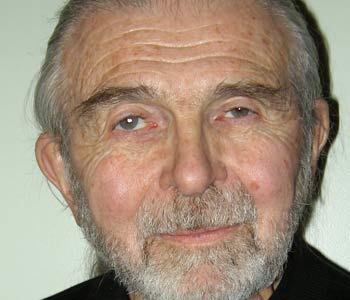Monika Zagar
Knut Hamsun: The Dark Side of Literary Brilliance
University of Washington Press
352 pages, 9 x 6 inches
ISBN 978 0295989457
ISBN 978 0295989464
Knut Hamsun: The Dark Side of Literary Brilliance explains how and why the extraordinary Norwegian novelist Knut Hamsun supported, enthusiastically and to the bitter end, the German occupation of Norway during World War II (1940-1945). Hamsun was the recipient of the Nobel Prize for Literature in 1920, respected and revered by broad audiences and critics alike in Europe and beyond. At home, Hamsun was a literary and cultural persona par excellence, helping establish the visibility of the new nation of Norway in 1905 after the dissolution of Norway’s union with Sweden.
In spite of the fact that in December 1947 he was tried and convicted by a municipal court in Norway for collaboration, the debate about Hamsun’s genius, crime, and punishment continues. It is this fascinating mix, in one man, of brilliant art and repugnant politics that has compelled me to write this book. I wanted answers to one simple question: how can a literary genius of his stature fall so low as to become a political collaborator with the National Socialist regime? The numerous books written on the topic up to 2000 did not satisfy my curiosity.
My book analyzes the relation between Hamsun’s writing and his support for the politics of the Norwegian National Socialist party and, by extension, for the expansion of the Third Reich. This goes against the mainstream Hamsun scholarship, in which Hamsun’s politics are dismissed as his private opinion, something separate from his fiction, or are proclaimed an enigma that will ultimately remain unanswered.
The Dark Side of Literary Brilliance starts out by situating Hamsun’s writing broadly within the identity politics of the newly independent nation of Norway. Political independence led, in some circles, to an intensified glorification of the white Nordic race. However, my book emphasizes Norway’s long history of interactions with other peoples at home and abroad, and establishes the discriminatory descriptions of other races in select Scandinavian and European texts—in the sagas, religious texts, letters from Scandinavian immigrants, missionary accounts, anthropological and medical articles, and in popular fiction—that influenced Hamsun’s own ideas about foreigners. I show that Hamsun’s derogatory portrayal of other races in his texts is a crucial component of his distinct worldview that ultimately led him to believe in and support the expansion of the Third Reich, based as it was on the supremacy of the Aryan nation.
The early impetus for the present book emerged from my astonishment over the reception of the 1996 film Hamsun, which professed admiration and compassion for the frail old writer in spite of his support for the Third Reich. This rather apologetic view of Hamsun was heavily indebted to Hamsun’s own version of the post-1945 events as he described them in his last book, On Overgrown Paths. The movie essentially transforms Hamsun’s own obfuscations and silences into pure truth. It is here, with Hamsun’s own text as the underpinning, that fiction takes over and becomes truth, pushing historical facts into oblivion. As so often before, Hamsun’s collaboration was reduced to a regrettable misstep by an old deaf man, a writer isolated in his ivory tower. His eloquence and his modernist art still reigned supreme, and the ways in which his personal political philosophy is reflected in his writing ignored.

While searching for answers to Hamsun’s support for the Third Reich, I felt that the critical texts about Hamsun were too narrowly focused on his standard set of novels. Hamsun wrote so much more. He wrote disparagingly about other races; his descriptions of blacks and their allegedly animalistic sexuality were especially repulsive.
While searching for answers to Hamsun’s support for the Third Reich, I was struck by several things. First, I felt that the critical texts about Hamsun were too narrowly focused on his standard set of novels, that is, on Hunger, Mysteries, Pan, his so-called August trilogy, and Growth of the Soil. Hamsun wrote so much more: not only other novels, but also plays, travel narratives, poems, articles about contemporary events, book reviews, and six thick volumes of letters. The following themes drawn from his work—investigated and mapped in my book—reveal some of Hamsun’s pre-occupations that are pertinent to a study of his character and the works he created: modern life and contemporary changes; women’s sexuality; children and families; racial or religious differences; life in the newly independent Norway.
Second, I found that Norway was treated by most of these studies as if it existed in isolation and not as part of a modern global world. I wanted to explore how increased mobility during the last decades of the nineteenth and early twentieth centuries affected people’s lives, including Hamsun’s. As a seafaring nation, a nation of immigrants, Norway had long been in touch with other peoples. There existed folklore, travel reports, immigrant letters, colonial stories and novels—even Viking sagas—that recounted interactions with such peoples as the Sami, the Inuit, Native Americans, and Africans. Hamsun, an avid if unsystematic reader, certainly came across many of these accounts, which then became part of his intellectual baggage even before he traveled to the United States in the 1880s. He wrote disparagingly about other races; his descriptions of blacks and their allegedly animalistic sexuality were especially repulsive.
Lastly and most importantly, women’s growing demands for economic, political, and cultural power, and for independence and control over their own pregnancies, became a hallmark of the same period. For Hamsun, women became the scapegoats for everything that went wrong with modern progress. While he created a vast array of strong and interesting women protagonists, his ideal remained a woman tamed in marriage, a mother with many children. Hamsun, as an advocate of natural fertility, consistently lobbied against women’s rights in the modern enlightened sense. In his novels he imagined a vision of an erotic woman who is ultimately fulfilled only within a relatively simple and basic family life—as a mother. The racial and cultural foreigners he invented as lovers brought to light and reinforced the raw disruptive force women possess by virtue of being women.
In Hamsun’s opinion, it was women who were the primary contributors to modern social disintegration, especially those who refused to have children, who fled the farms and found jobs in the cities, who became educated, who embraced modern fashion, or who deviated from the patriarchal norm in some other way. Modern life had replaced an ideal organic universe where every family member has an indispensable place and role. Hamsun advocated such an ideal organic universe in several of his articles and in his Nobel Prize-winning novel, Growth of the Soil. His novels can often be read as portraits of the state of affairs after the collapse of the organic community.
These feelings and opinions, including those concerning the dangerous non-European races as well as healthy sexuality, were axiomatic in Nazism. These commonalities drew the Nazis to Hamsun and Hamsun to the Nazis. Nazi-produced propaganda treated Hamsun’s masterpiece Growth of the Soil as an integral part of their education campaign.
Hamsun considered the post-World War I Versailles Treaty, which changed Germany’s borders and lost its overseas colonies, extremely unfair to Germany. In his view, the Third Reich would revitalize Germany and the New Europe. Indeed, he understood the Nazi takeover as a positive Cultural Revolution. The Nazi expansion into the fertile steppes of the East was a legitimate move to neutralize the Bolshevik threat and to secure territory for future German generations. In this project, women were extremely important. The Nazi expansionist policies mandated increasing birth rates by the master race and prohibited miscegenation.
Hamsun’s hatred of the Anglo-Saxon worldview and his gratitude towards Germany, where he enjoyed early literary success, certainly contributed to his stance. Yet Hamsun’s broader cultural worldview, one that rejected the accomplishments of enlightenment and modern progress, reveals so many contact points with the Nazi ideology that it is no wonder that Hamsun openly embraced Hitler’s call for a New Europe. Thus my book is offered as a corrective to studies that treat Hamsun's Nazi support as a peripheral and unimportant detail in an otherwise illustrious literary life.
Hamsun’s actions in the few short summer months of 1943 define him, clarifying his unreserved support of the Nazi program. He writes an admiring letter to Joseph Goebbels and sends him his Nobel Prize medal as a gift; he delivers a speech at the Press Internationale in Vienna in June of 1943 in which he expresses a worldview consistent with the Nazi politics of the day, his racist rhetoric identical to that of the congress organizers, and his personal voice intertwined with the prevailing propaganda; and he has a personal meeting with Hitler at the Fuhrer’s Eagle’s Nest sanctuary, arranged by high party functionaries after Hamsun’s supportive speech in Vienna. The above facts, for all the mitigating circumstances one would wish to consider, confirm that Hamsun indeed believed in the project of the Third Reich.
Two years later, on the occasion of Hitler’s death, Hamsun wrote a glowing obituary. By extension, it is also interesting how the official 1946 psychiatric report on Hamsun avoided dealing with these facts; for instance, in reference to giving away his medal, the name Goebbels was replaced with “a German.” The question of post-war reinterpretation of Hamsun’s actions and writing thus becomes a relevant one. Hamsun’s last novel, On Overgrown Paths, uses his literary skills to skew the view of his actions and alter the reader’s judgment of him.
Apart from hard political facts, what I want a reader to discover is the more insidious side of Hamsun’s worldview, which is often congruent with the propaganda and reality of the Third Reich. If my book inspires a reader to revisit Growth of the Soil, I hope they approach it with some wonder at how hard it is on women not to be able to control their fertility and the burden they bear from repeated pregnancies. Hamsun’s praise of fertile erotic women as mothers and, in contrast, his demonizing or derogatory portrayal of women who would aspire beyond motherhood are fully fleshed out in his novel. Hamsun aspires to a utopian world where everyone is part of an organic life cycle; women and their fertility are central to this cycle. This organic life cycle should be embraced intuitively, and not be questioned.
At the end of the novel, achievements of modern progress—education, industrialization, mobility, women’s rights, modern medicine—are subsumed into this eternal life cycle. Although the novel is to a certain degree atypical for Hamsun, it expresses the author’s basic values: anti-intellectualism, anti-state and anti-parliamentary democracy, anti-progress, and anti-women’s rights. Hamsun was also against Christian morality and he endorsed natural fertility. However, he tamed women’s sexuality within patriarchal constraints, and warned against miscegenation in his other works. All of these moral values are embedded in a text that is a pleasure to read, not only because of a story well told, but also because of Hamsun’s great skill with language. It easily escapes one that all of these views, especially his view on sexuality, agree so fully with the Nazi ideology.

So-called great men and artists are not exempt from lending support to repressive ideologies.
I would like my book to contribute to our understanding of the lives and texts of supporters of dictatorial regimes who unsettle our ethical, moral, and aesthetic judgments. The ensuing unease often results in a convenient division between dirty politics and beautiful art.
The Dark Side of Literary Brilliance is a reminder of the simple fact that so-called great men and artists are not exempt from lending support to repressive ideologies; besides Hamsun, Ezra Pound, Louis-Ferdinand Celine, and Martin Heidegger leap to mind. We, the readers, should not fall under their seductive spell, but rather should read them critically. Even masterpieces need to be read in context with other texts, and canons revisited. One can read Hamsun’s great literary works without realizing his agenda, his desire to reverse modernity and for society to reject liberal attitudes towards women and Others. Yet to read Growth of the Soil or On Overgrown Paths knowing how Hamsun felt about these issues will yield a different assessment of those works than if one reads them uninformed.
I’d also like to encourage the readers to reflect on the fact that Nazism, even if it obviously operated on intimidation and fear, was supported by small daily decisions of ordinary citizens. It was rooted in deep-seated convictions and traditions that the ideologues deftly exploited. These traditions include the power of the blood and nation, and the sanctity of motherhood and family. Hamsun did not march dressed in a Nazi uniform or display anti-Semitic signs. Yet he was in agreement with many broader premises of the National Socialist party. Other ideologies function in a similar way, and our resistance is crucial in defense of basic democratic rights.




We don't put paywalls. We don't distract you with ads. We don't sell your data.
Please help to keep this running!